States > Karnataka
Dussehra: A Glimpse of Celebrations across India
Albeit with different names, Dussehra is a popular festival of the country celebrated with great pomp and show. Navaratri is a nine night festival that honors the Mother Goddess in all her manifestations - Durga, Lakshmi and Saraswati. The tenth day of Navaratri is usually celebrated as "Dussehra" and is devoted to celebrating the defeat of the demon king Ravana by Lord Rama. The festival is celebrated throughout the country at the same time, with varying rituals, but with great enthusiasm and energy. From enacting Ramlila in Delhi to the elephant procession in Mysore, the celebrations are as vivid as the country. Here are a few places which is famous for its way of celebrating the victory of good over evil with great frivolity.
Delhi:
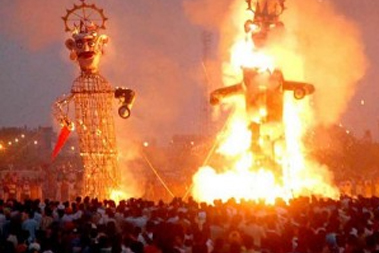
Celebrated with much fervor and gusto in Delhi, the festival is celebrated as "Vijaya Dashmi" and is deficient without the famous Ramlila performance (performance of the Ramayana epic). After the final act of Ramlila gets over, giant effigies of Ravana, Kumbhakaran and Meghnath are burnt to mark the destruction of evil. Fireworks are visible as the effigies burn signifying the festival of Dussehra.
Mysore:
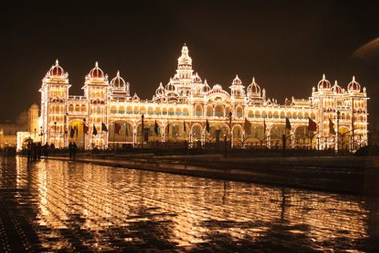
The "Nadahabba" (state festival) of Karnataka, Dasara is celebrated with fireworks, processions and sweets. Dasara is a 10-day festival in the region culminating on Vijayadashami or tenth day. The day marks the triumphant finale of the previous nine days. On the tenth day a striking extravagant Procession locally called the "Jumboo Savari" because of the number of elephants partaking in the procession, is held which starts from Mysore Palace and ends in Bannimantap. Another chief pull during Dasara is the Dasara exhibition which is held in the exhibition grounds opposite the Mysore Palace. During the festival, Mysore Palace is flamboyantly lit up by almost 100,000 light bulbs, every night from 7 p.m. until 10 p.m. Several music and dance shows take place at the Palace and other venues. There's also a food festival, and wrestling competition.
Ahmedabad:
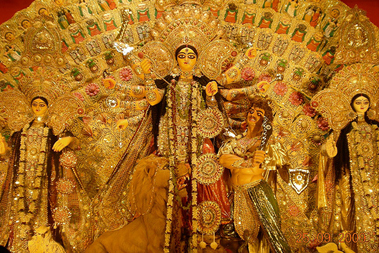
The Navratri festival in Gujarat is devoted to Goddess Shakti and is celebrated with joviality and zeal. The highlight of the festivity of nine days is the folk dance, Garba which is also known as Dandiya. Each day of the fete begins with the "aarti". Devotees and enthusiasts dance the Garba and Dandiya around the idol of Goddess Shakti till late midnight.
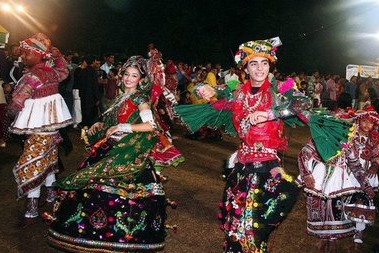
Kullu:
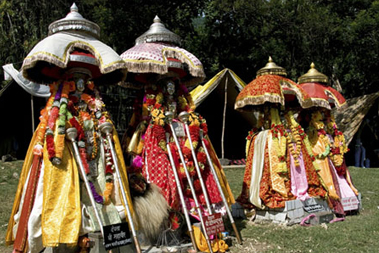
Kullu, a famous destination in Himachal Pradesh is an onlooker to unique Dussehra Celebrations. Celebration of Dussehra starts three day later than they do in the rest of the country. The idol of Raghunathji is escalated on a grand "rath" (chariot), and pulled from its permanent place in the Dholpur maidan to another part of the paddock on the first day.
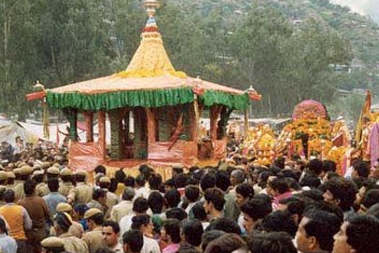
A Devta Durbar (Council of Gods) is held, with Raghunathji heading it on the second day. On the last day of the celebration, the chariot of Raghunathji is drawn amidst fanfare to the banks of the river Beas where a pile of wood and grass is set on fire to denote the smoldering of Lanka and five animals-a crab, a cock, a fish, a buffalo and a male goat are forfeited. The people then engross themselves in revels. Lugri, the customary Kullu drink, flows by the gallon.
Kolkata:
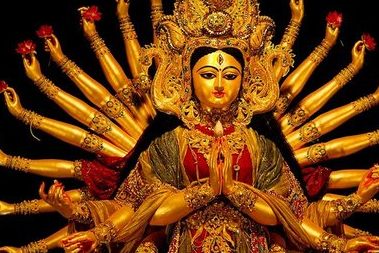
Spurt of Fanfare, sweets and frivolity is what Dussehra or "Durga Puja" - as it is known as in Kolkata - is described as in west Bengal. Popularly known as Sharodotsav, the festival recalls the power of women "Shakti", which is denoted by Goddess Durga who slays asura to reinstate peace and sanctity on earth. Durga Puja is a time when the memorable sound of Dhak, Dhunuchi nachh, the mild fragrance of Shiuli, and the tearful send-off given to Goddess Durga gives a memorable tug to every Bengali heart.
Delhi:

Celebrated with much fervor and gusto in Delhi, the festival is celebrated as "Vijaya Dashmi" and is deficient without the famous Ramlila performance (performance of the Ramayana epic). After the final act of Ramlila gets over, giant effigies of Ravana, Kumbhakaran and Meghnath are burnt to mark the destruction of evil. Fireworks are visible as the effigies burn signifying the festival of Dussehra.
Mysore:

The "Nadahabba" (state festival) of Karnataka, Dasara is celebrated with fireworks, processions and sweets. Dasara is a 10-day festival in the region culminating on Vijayadashami or tenth day. The day marks the triumphant finale of the previous nine days. On the tenth day a striking extravagant Procession locally called the "Jumboo Savari" because of the number of elephants partaking in the procession, is held which starts from Mysore Palace and ends in Bannimantap. Another chief pull during Dasara is the Dasara exhibition which is held in the exhibition grounds opposite the Mysore Palace. During the festival, Mysore Palace is flamboyantly lit up by almost 100,000 light bulbs, every night from 7 p.m. until 10 p.m. Several music and dance shows take place at the Palace and other venues. There's also a food festival, and wrestling competition.
Ahmedabad:

The Navratri festival in Gujarat is devoted to Goddess Shakti and is celebrated with joviality and zeal. The highlight of the festivity of nine days is the folk dance, Garba which is also known as Dandiya. Each day of the fete begins with the "aarti". Devotees and enthusiasts dance the Garba and Dandiya around the idol of Goddess Shakti till late midnight.

Kullu:

Kullu, a famous destination in Himachal Pradesh is an onlooker to unique Dussehra Celebrations. Celebration of Dussehra starts three day later than they do in the rest of the country. The idol of Raghunathji is escalated on a grand "rath" (chariot), and pulled from its permanent place in the Dholpur maidan to another part of the paddock on the first day.

A Devta Durbar (Council of Gods) is held, with Raghunathji heading it on the second day. On the last day of the celebration, the chariot of Raghunathji is drawn amidst fanfare to the banks of the river Beas where a pile of wood and grass is set on fire to denote the smoldering of Lanka and five animals-a crab, a cock, a fish, a buffalo and a male goat are forfeited. The people then engross themselves in revels. Lugri, the customary Kullu drink, flows by the gallon.
Kolkata:

Spurt of Fanfare, sweets and frivolity is what Dussehra or "Durga Puja" - as it is known as in Kolkata - is described as in west Bengal. Popularly known as Sharodotsav, the festival recalls the power of women "Shakti", which is denoted by Goddess Durga who slays asura to reinstate peace and sanctity on earth. Durga Puja is a time when the memorable sound of Dhak, Dhunuchi nachh, the mild fragrance of Shiuli, and the tearful send-off given to Goddess Durga gives a memorable tug to every Bengali heart.
Reader's comments(1)